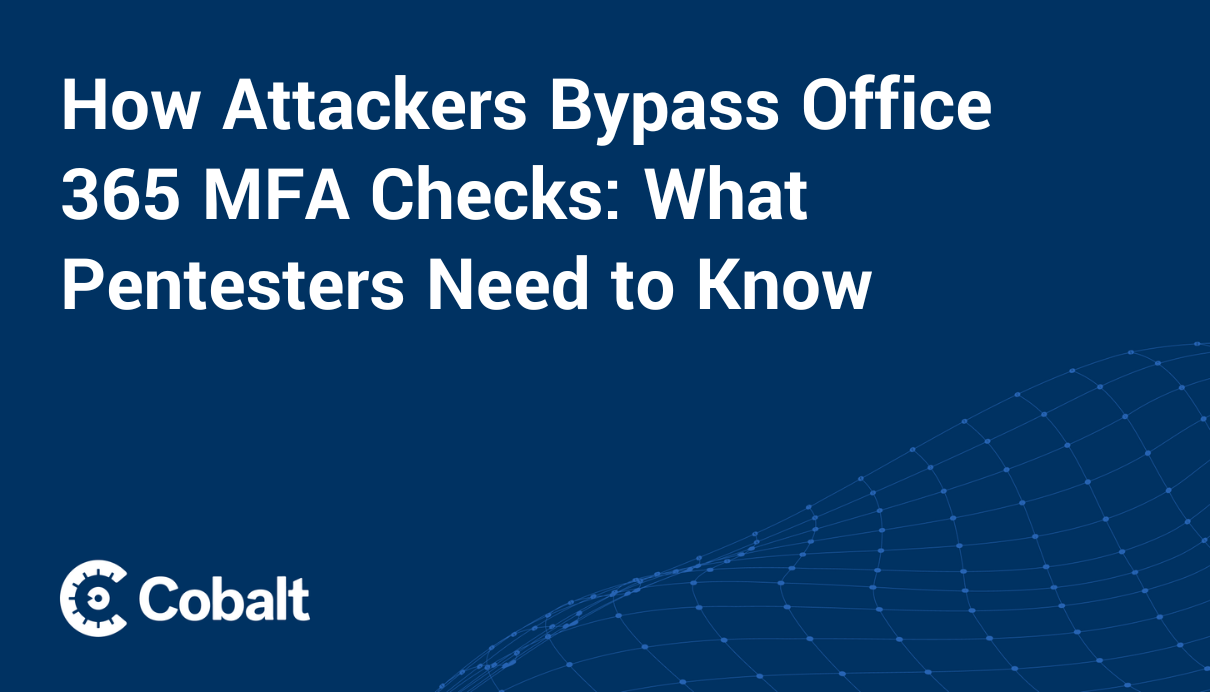Attack vector management forms the foundation for effective cybersecurity. Understanding the attack vectors that compose your attack surface positions you to prepare strategic defenses.
In this blog, we'll provide an overview of attack vectors and how to defend against them. First we'll explore the concept of what an attack vector is and how it relates to your attack surface. Then we'll review examples of today's most common attack vectors. Finally, we'll offer strategic guidelines for defending against common attack vectors and recommend resources for implementing a defense strategy.
What Is an Attack Vector?
Attack vectors (also called threat vectors) are points of vulnerability unauthorized users can exploit to enter IT systems. The term borrows from the biological concept of a disease vector, representing the different ways an infection can enter an organism. For example, mosquitoes provide a vector for malaria to infect animals. Similarly, attack vectors provide openings for viruses, malware, worms, and other threats to enter computer networks.
Once inside a system, cybercriminals may follow up with various methods to exploit access. They may explore networks to identify assets, escalate permissions to prepare offensives, and launch cyber attacks to steal data or disrupt systems.
Attack Vectors and Attack Surfaces
The concept of an attack vector relates closely to the concept of an attack surface. All the attack vectors threatening your computer network, applications, or devices make up your attack surface. Conversely, your attack surface consists of all the vectors outsiders can use to gain access to your network such as publicly available information — potentially abused in a phishing attack. From this perspective, cybersecurity can be approached as a strategic method of defending your attack surface by systematically identifying all attack vector vulnerabilities and mitigating risks.
Categorizing Attack Vectors
Attack vectors can be categorized by the type of attack surface they involve. Attack surfaces include three major groupings:
- Digital attack surfaces, accessible to attackers with Internet access to computer networks
- Physical attack surfaces, accessible to attackers with local access to network hardware, physical office spaces, or other locations with physical controls.
- Social engineering attack surfaces, accessible to attackers who have access to authorized network users, proprietary or sensitive brand information, or locations with physical controls that could lead to tail-gating or pretexting.
These categories serve to organize the attack vectors discussed below. In some cases, attack vectors fall into overlapping categories. For instance, unauthorized users may steal passwords using digital, physical, or social engineering attacks.
23 Common Attack Vector Examples
Today's most common attack vectors to disrupt a system’s availability or gain initial access to networks include:
- Credential theft or hacking
- Brute force or weak passwords
- Insufficient encryption
- Distributed denial of service (DDoS)
- Misconfiguration
- Session hijacking
- Man-in-the-middle (MITM) attacks
- Content injection
- Drive-by compromise
- Cross-site scripting (XSS)
- Zero-day vulnerabilities
- SQL injections
- Supply chain compromise
- Insider threats
- Trusted relationship exploitation
- Replication through removable media
- Hardware additions
- Phishing
- Trojans
- Viruses & Worms
- Ransomware
- Excessive Access
- Unpatched Systems
Jump straight to how to defend against these attack vectors.
Most of these vectors involve digital attack surfaces, but a few involve physical or social engineering attacks, and some cross multiple categories.
1. Credential Theft or Hacking
Stolen passwords remain one of the most common network vulnerabilities. Intruders can acquire usernames and passwords through digital methods such as keystroke logging, physical means such as on-premise spying, or social engineering attacks such as phishing.
Cyberthieves also may obtain credentials by hacking them through digital methods such as testing common passwords or exploiting weak encryption. Methods of mitigating this threat include
Mitigate this threat through credential management best practices such as:
- Password rotation
- Password managers
- Strong password selection & encryption
- Multi-factor authentication
2. Brute Force or Weak Passwords
Attackers will exploit weak passwords which are surprisingly prevalent and take only seconds to crack. Similarly, attackers can also obtain credentials by systematically testing all possible combinations through brute force attacks. The usage of weak passwords only enables brute force attacks to be conducted more easily and successfully. Counter tactics for mitigation include:
- Long password lengths
- Limiting login attempts
- Multi-factor authentication
- Whitelisting IP addresses
3. Insufficient Encryption
Poor encryption can expose networks to not only credential hacking but also other threats. Vulnerabilities can arise from sources such as short keys, weak algorithms, insecure key storage, or insufficient transport layer protection. Mitigation practices include:
- Long keys
- Strong algorithms
- Salting
- Proper key management
- Secure transport layer protocols
4. Distributed Denial of Service (DDoS)
This attack vector uses multiple launch points to overload systems resources and prevent users from accessing networks. Attackers achieve this through tactics such as submitting high volumes of requests, amplifying DNS queries, and exploiting third-party vulnerabilities. Mitigation tactics include:
- Limiting attack surfaces
- Real-time threat monitoring
- Request content caching or rate limiting
- Adding a WAF
5. Misconfiguration
Improper network setup can leave systems exposed to this attack vector. Common causes include unchanged default settings or passwords, outdated software, unprotected directories, and unnecessary features.
Mitigation tactics include:
- Changing default settings
- Updating software
- Disabling directory listings
- Removing unused features
6. Session Hijacking
This attack vector exploits session tokens by stealing or predicting them to gain unauthorized network access. Vulnerabilities may stem from sources such as predictable tokens, session sniffing, client-side attacks, and man-in-the-middle attacks. Mitigation methods include:
- Using strong session IDs
- Avoiding IDs in URLs
- Using HTTP cookies
- Securing cookies
7. Man-in-the-middle (MITM) Attacks
This vector intercepts network traffic to access sensitive information. Attackers may launch MITM attacks through phishing emails, website spoofing, or eavesdropping on public Wi-Fi hotspots. Mitigation methods include:
- Secure communication protocols
- Message authentication
- Tamper detection
8. Content Injection
Also called content spoofing or arbitrary text insertion, content injection exploits user-supplied data mishandling to introduce vulnerabilities into web applications. Attackers may insert plain text or HTML code to alter website, email, or other content and trick users into providing sensitive information or clicking on malicious links. Mitigation methods include:
- Restricting web-based content
- Encrypting sensitive information
9. Drive-by Compromise
This attack vector targets website visitors by injecting malicious code into websites, ads, or app interfaces. The code scans visitors' browsers for vulnerabilities that can be exploited to access users' systems. Mitigation methods include:
- Restricting web-based content
- Application isolation and sandboxing
- Keeping software updated
- Using exploit protection tools
10. Cross-site Scripting (XSS)
Cross-site scripting attacks inject client-side scripts into websites to infect other users. This vulnerability stems from failing to validate or encode user input before delivering output. XSS mitigation tactics include:
- Contextual output encoding and escaping of string input
- Validating of untrusted HTML input
- Securing cookies
- Disabling scripts
11. Zero-day Vulnerabilities
This vector targets unknown or unpatched security flaws, giving the software or hardware vendor zero time to prevent exploitation. Mitigation strategies include:
- Keeping up with threat intelligence
- Monitoring anomalous network activity
- Practicing rapid patch management implementation
12. SQL Injections
This attack uses client-provided input data to insert malicious SQL queries into applications. SQL injections may expose sensitive data, delete data, execute operations on databases, recover file content, or command operating systems. Mitigation methods include:
- Using prepared statements with parameterized queries
- Using correctly constructed stored procedures
- Applying allowlist validation to input
13. Supply Chain Compromise
Supply chain attacks exploit vulnerabilities in third-party software used on networks. For example, attackers may compromise systems through codebases or by altering code during software builds. Vulnerabilities often stem from insecure coding practices, lax code reviews and testing, insecure app signing and distribution, or poor security controls. Mitigation strategies include:
- Keeping up with threat intelligence
- Adhering to secure coding practices
- Implementing secure app signing and distribution
- Establishing security controls
14. Insider Threats
Unlike threats discussed so far, this attack comes from authorized users such as employees or contractors who misuse legitimate network access. Misuse may stem from negligence of security practices, malicious intent, or hostile takeover of legitimate accounts. Mitigation methods include:
- Training employees and users in security best practices
- Limiting access permissions
- Monitoring suspicious network behavior
15. Trusted Relationship Exploitation
This variation of insider threat stems from trusted third parties who have network access, such as contractors and service providers. Vulnerabilities can be aggravated by lax permissions management and poor user authentication practices. Mitigation strategies include:
- Segmenting networks to isolate sensitive components
- Implementing account and permissions management
- Applying multi-factor authentication
16. Replication through Removable Media
This vector targets devices such as hard drives, flash drives, and mobile devices connected through USB ports. Malware may be introduced onto removable media through means such as manual manipulation, modification of formatting systems, or altering firmware. Mitigation tactics include:
- Limiting installation of removable media
- Disabling autorun and other unnecessary features
- Enabling attack surface reduction rules to block USB removable drives from executing unsigned or untrusted executable files
17. Hardware additions
This attack method introduces new hardware to networks or systems, such as decoy phone chargers, computer accessories, or additional devices. This allows bad actors to exploit additional functions and features for malicious purposes. It also can lead to a rogue access point where the router is duplicated to bypass admins and other protective measures. Mitigation strategies include:
- Using endpoint security configuration and monitoring to block unknown devices
- Implementing network controls to limit resource access
- Disable USB functionality on workstations
- Deploy detection measures to stop rogue access points
18. Phishing
Phishing attacks use email, social media, or other digital communications to deliver social engineering attacks that deceive users into executing malicious code or sharing confidential information. Attacks may seek to gain credentials, steal financial data, or introduce malware. Mitigation methods include:
- Training employees and users to recognize suspicious messages
- Using multi-factor authentication
- Filtering messages and restricting web-based content
- Running antivirus software
- Running network intrusion prevention scans to remove malicious links and attachments
- Auditing systems for vulnerabilities
19. Trojans
This attack method disguises malware as legitimate applications to deceive users into downloading it. Once installed, trojans may contact botnet servers, spy on data, change data, delete data, or perform other malicious actions. Trojans may enter systems through email attachments, websites, file-sharing sites, spoofed chat messages, or hacked networks. Leading mitigation methods include:
- Limiting user downloads on their workstations
- Running antivirus software
- Avoiding suspicious attachments and downloads
20. Viruses & Worms
Viruses resemble trojans, but they replicate by attaching themselves to host programs and spreading from one file to another. They are considered malicious software and enter systems the same way as trojans. They can be mitigated using similar strategies.
Worms resemble viruses, but they run as independent programs and do not require a host. They infect systems using the same methods as trojans and viruses and can be combated using similar strategies. Methods for mitigating viruses and worms include:
- Limiting user downloads on their workstations
- Running antivirus software
- Avoiding suspicious attachments and downloads
- Maintain system patches to avoid known vulnerabilities propagating a virus or worm
21. Ransomware
This type of malware encrypts victims' data and threatens to block or delete it unless a fee is paid. Ransomware spreads through phishing emails, ads containing malicious code, or exploit kits. Methods for mitigating ransomware attacks include:
- Keeping software updated
- Practicing email and endpoint security
- Running data backups
22. Excessive Access
Excessive access is when users or third parties are granted permissions beyond what they require to perform their duties. This can lead to data breaches, unauthorized modifications, and other security incidents. Methods for mitigating excessive access include:
- Regularly reviewing and revoking unnecessary permissions
- Implementing the principle of least privilege
23. Unpatched Systems
Unpatched systems are those that have not been updated with the latest security patches, leaving them vulnerable to known exploits. This can lead to a variety of security breaches, including malware infections, data breaches, and system compromises. Methods for mitigating unpatched systems include:
- Implementing a patch management system to automate the process of identifying and applying updates.
- Regularly scanning systems for missing patches
- Prioritizing patching for critical systems and applications
How to Defend against Common Attack Vectors
Strategies for mitigating specific threats work best when incorporated into a comprehensive cybersecurity strategy. Best practices for securing networks against common attack vectors include:
Educating employees and customers on common scams
- Using strong passwords
- Employing password managers
- Requiring multi-factor authentication
- Applying know your customer best practices when processing payments
- Implementing a patch management system and keeping your software updated to the latest version
Deploying network security best practices, including:
- Network segmentation
- Firewalls
- Virtual private networks
- Network address translation
- Web proxy servers
- Software whitelisting
- Restricting digital and physical network access
Applying mobile device management best practices, including:
- Using mobile device management (MDM) platforms
- Authenticating users
- Keeping devices updated
- Preventing devices from saving data locally
- Adopting remote device lock and wipe policies
Following website security best practices, including:
- Deploying secure transport layer protocols
- Keeping software updated
- Restricting access permissions
- Limiting data collection
- Using content delivery networks
- Running backups
Using email security best practices, including:
- Strong passwords
- Multi-factor authentication
- Encryption
- Message filtering
Running penetration testing (pentesting) to systematically assess vulnerabilities and mitigate risks.
Applying these general guidelines will support and strengthen the defenses applicable to specific attack vectors.
Counter Common Attack Vectors with Cobalt Pentesting
Pentesting plays a critical role in mitigating common attack vectors by allowing security teams to systematically probe vulnerabilities through simulated attacks. This allows organizations to anticipate attacks and implement preemptive measures. Many compliance frameworks require pentesting, including PCI, SOC 2, and HIPAA.
Cobalt provides pentesting as a service (PtaaS) for security teams, including both network pentesting and application pentesting. We support you with an experienced pentesting community led by a core of 400 experts who work directly with security authorities and contribute to Open Worldwide Application Security Project (OWASP) standards. We match you with a pentesting expert who fits your needs and helps you integrate your pentesting data with tools such as Jira and Github. Our user-friendly pentesting platform makes it easy for you to start running tests rapidly and get real-time feedback on vulnerabilities.
Schedule a demo to see how our PtaaS platform and highly-vetted pentesting community can help you stay ahead of emerging threats.









